Co-Design of CVT-Based Electric Vehicles
Abstract
1. Introduction
- :
- An SST-based EV model including energy dynamics and thermodynamics with reference to a series production vehicle is firstly created. It is developed based on static efficiency maps represented by lookup tables, which is validated against measurement data from real-world driving. It replicates the physical behavior of the vehicle in reality.
- :
- A CVT-based EV model is then developed based on , where only the SST is replaced by a CVT (an off-the-shelf component, which is not optimized). Other components, for example, the battery and EM, are the same. The CVT model is created based on experimental data from a test rig.
- :
- Component models from are convexified to fit the measurement data from real-world driving and experimental data from the test rig. is subsequently optimized with the co-design optimization strategy.
2. Problem Definition
3. System Modeling
3.1. Derivation of Convex Models
3.2. Drive Cycle
3.3. Longitudinal Dynamics
3.4. Convex CVT Model
3.5. Convex EM Model
3.6. Convex EM Power Limitation Model
3.7. Thermal EM-CVT Model
3.8. Convex Battery Model
3.9. Convex Mass and Cost Models
4. Optimization Results and Discussion
4.1. Control and Design Freedom
4.2. Sequential Design versus Simultaneous Design
- SD: Based on , assuming that the EM size is fixed (i.e., ) in order to achieve the required performance (Section 1), the goal is to find the CVT speed ratio over time, CVT and battery size reducing the TCO.
4.3. Towards a Low-Power Application
- LP: Based on , assuming that there are no performance requirements (Section 1), the aim is to find the optimal design and control variables reducing the TCO while satisfying drive cycle requirements.
4.4. Thermal Performance
5. Conclusions
Author Contributions
Funding
Institutional Review Board Statement
Informed Consent Statement
Data Availability Statement
Acknowledgments
Conflicts of Interest
Abbreviations
| AC | Alternating Current |
| BA | Battery |
| CAN | Controller Area Network |
| CP | Convex Programming |
| CVT | Continuously Variable Transmission |
| DC | Direct Current |
| DNR | Drive, Neutral and Reverse |
| DP | Dynamic Programming |
| EC | Energy Consumption |
| ELOP | Electric Oil Pump |
| EM | Electric Machine |
| EV | Electric Vehicle |
| FD | Final Drive |
| ICDC | Intercity Drive Cycle |
| KPI | Key Performance Indicator |
| LP | Low Power |
| OOL | Optimal Operating Line |
| PSO | Particle Swarm Optimization |
| RL | Road Load |
| SC | System Cost |
| SD | Sequential Design |
| SST | Single Speed Transmission |
| TCO | Total Cost of Ownership |
| TMS | Thermal Management System |
| TR | Transmission |
| VA | Variator |
| VCU | Vehicle Control Unit |
| WH | Wheel |
| WLTC | Worldwide Harmonized Light Vehicles Test Cycle |
Appendix A. SST-Based EV Model
Appendix A.1. Longitudinal Dynamics
| Parameter | Value | Unit | Description |
|---|---|---|---|
| 1.18 | kg/m3 | Density of air | |
| 0.27 | - | Aerodynamic drag coefficient | |
| 2.21 | m2 | Frontal area | |
| 0.00724 | - | Rolling resistance coefficient | |
| 1 | kgm2 | Wheel inertia | |
| 0.312 | m | Wheel radius | |
| 0.98 | - | Fixed gear efficiency | |
| 0.985 | - | Final drive efficiency | |
| 2.63 | - | Underdrive ratio | |
| 0.7 | - | Overdrive ratio | |
| 430 [19] | J/kgK | Specific heat capacity of EM | |
| 630 [23] | J/kgK | Specific heat capacity of CVT | |
| 630 [23] | J/kgK | Specific heat capacity of SST | |
| 4090 | J/kgK | Specific heat capacity of EM cooling medium | |
| 1000 | J/kgK | Specific heat capacity of air | |
| 0.62 [23] | - | CVT heating coefficient | |
| 2000 | W/m2K | Heat transfer coefficient between EM and its cooling medium | |
| 10 | W/m2K | Heat transfer coefficient between EM and ambient air | |
| 10 | W/m2K | Heat transfer coefficient between CVT and ambient air | |
| 111 | W/K | Heat transfer coefficient between EM and CVT | |
| 125 | W/K | Heat transfer coefficient between EM cooling medium and CVT oil | |
| 0.2 | m2 | Heat exchange area between EM and its cooling medium | |
| 0.32 | m2 | Heat exchange area between EM and ambient air | |
| 0.17 | m2 | Heat exchange area between CVT and ambient air | |
| 1.5 | kg | Cooling medium mass | |
| 0.35 | kg/s | Coolant flow rate | |
| 0.6 [34] | - | Radiator effectiveness | |
| 65 | °C | Maximum EM temperature | |
| 65 | °C | Maximum cooling medium temperature at EM outlet | |
| 65 | °C | Maximum cooling medium temperature at EM inlet | |
| 46.532 | km | Two repeated WLTC length | |
| 300,000 | km | Traveled distance of vehicle in its lifetime | |
| 0.23 | €/kWh | Price of electricity | |
| 13 [23] | €/kg | Specific cost of CVT | |
| 1000 | € | Specific cost of EM | |
| 250 | €/kWh | Specific cost of battery | |
| 25.4 | kWh | Battery energy | |
| 264 | - | Battery cells |
Appendix A.2. Single-Speed Transmission
Appendix A.3. Electric Machine


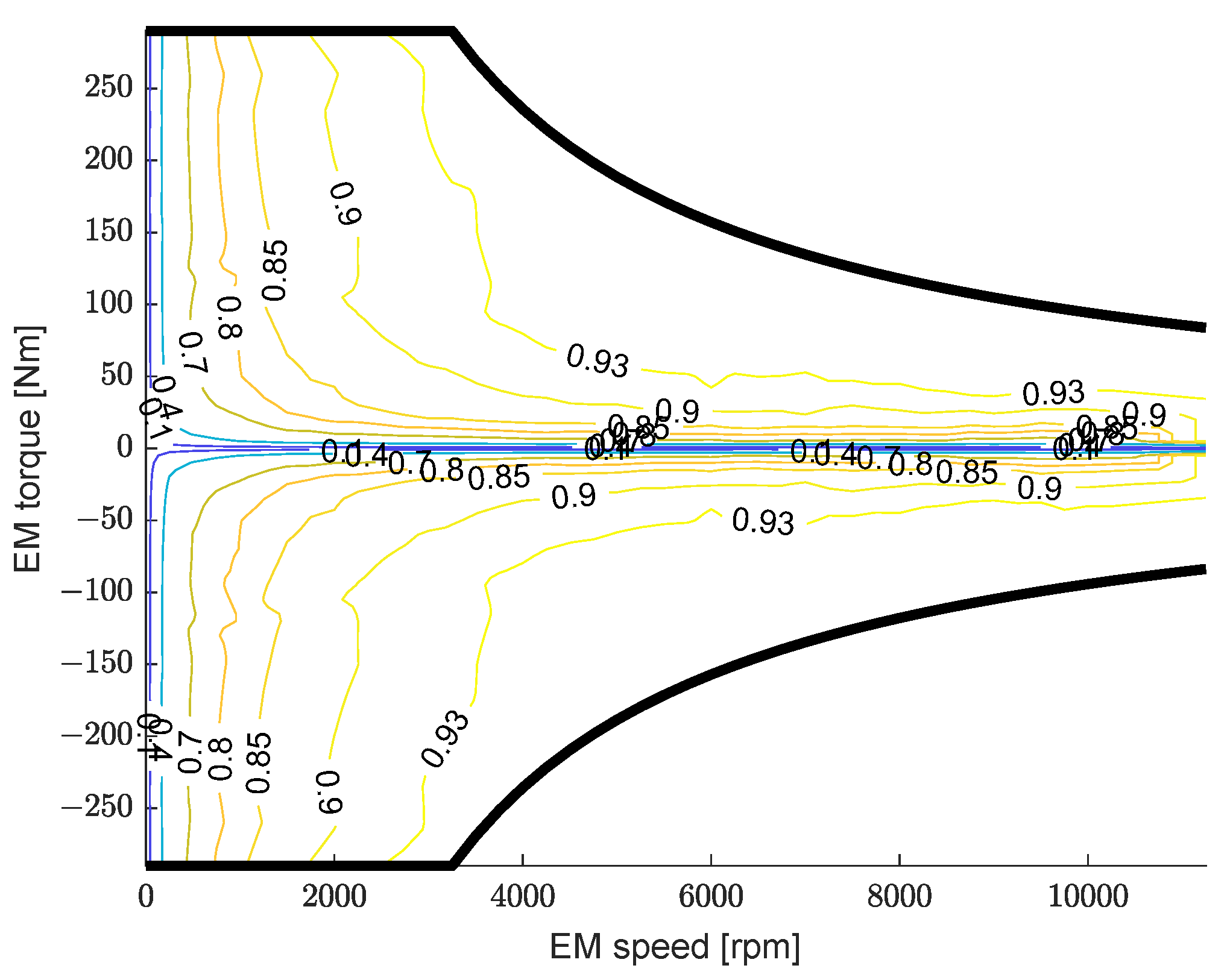
Appendix A.4. Thermal EM-SST Model
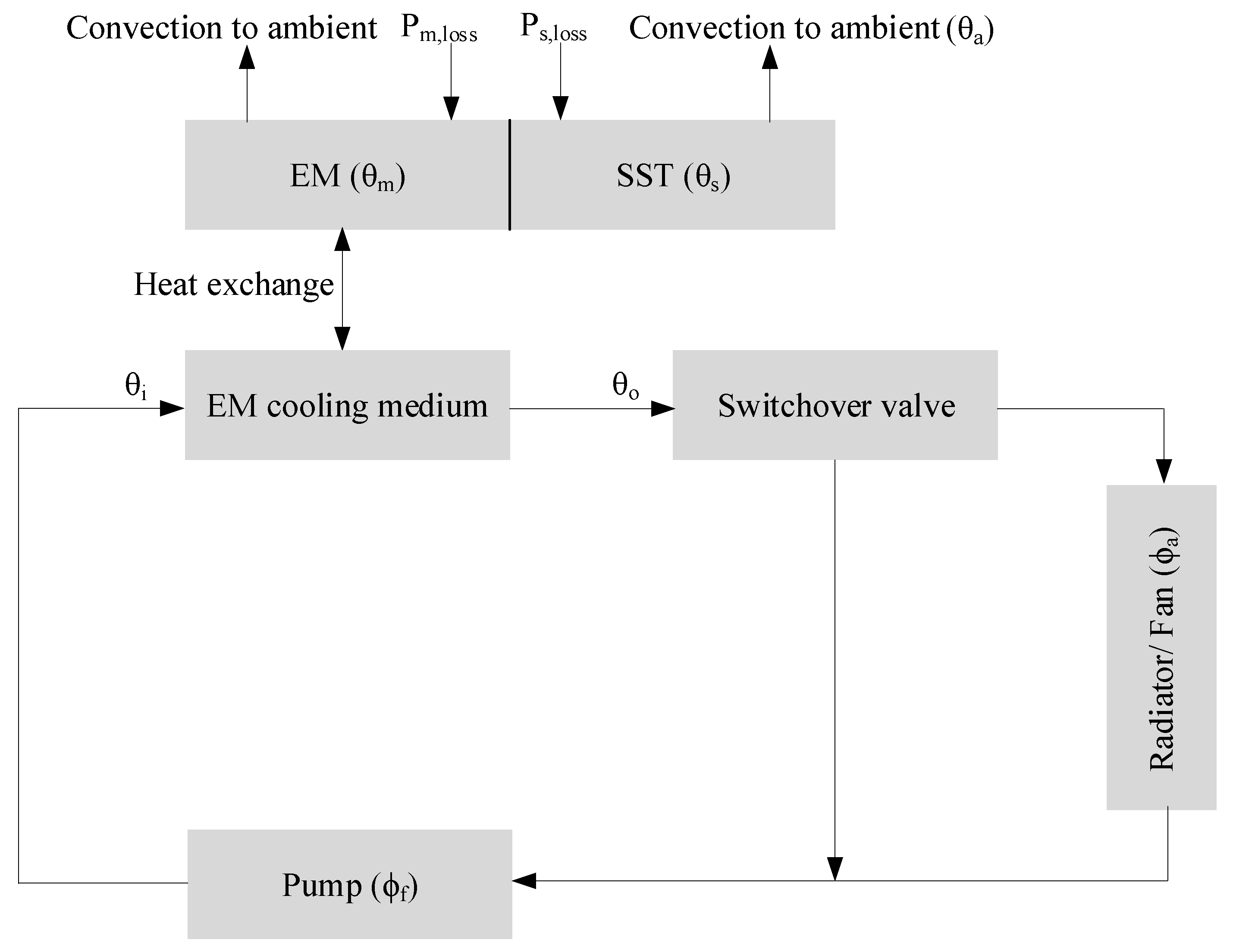
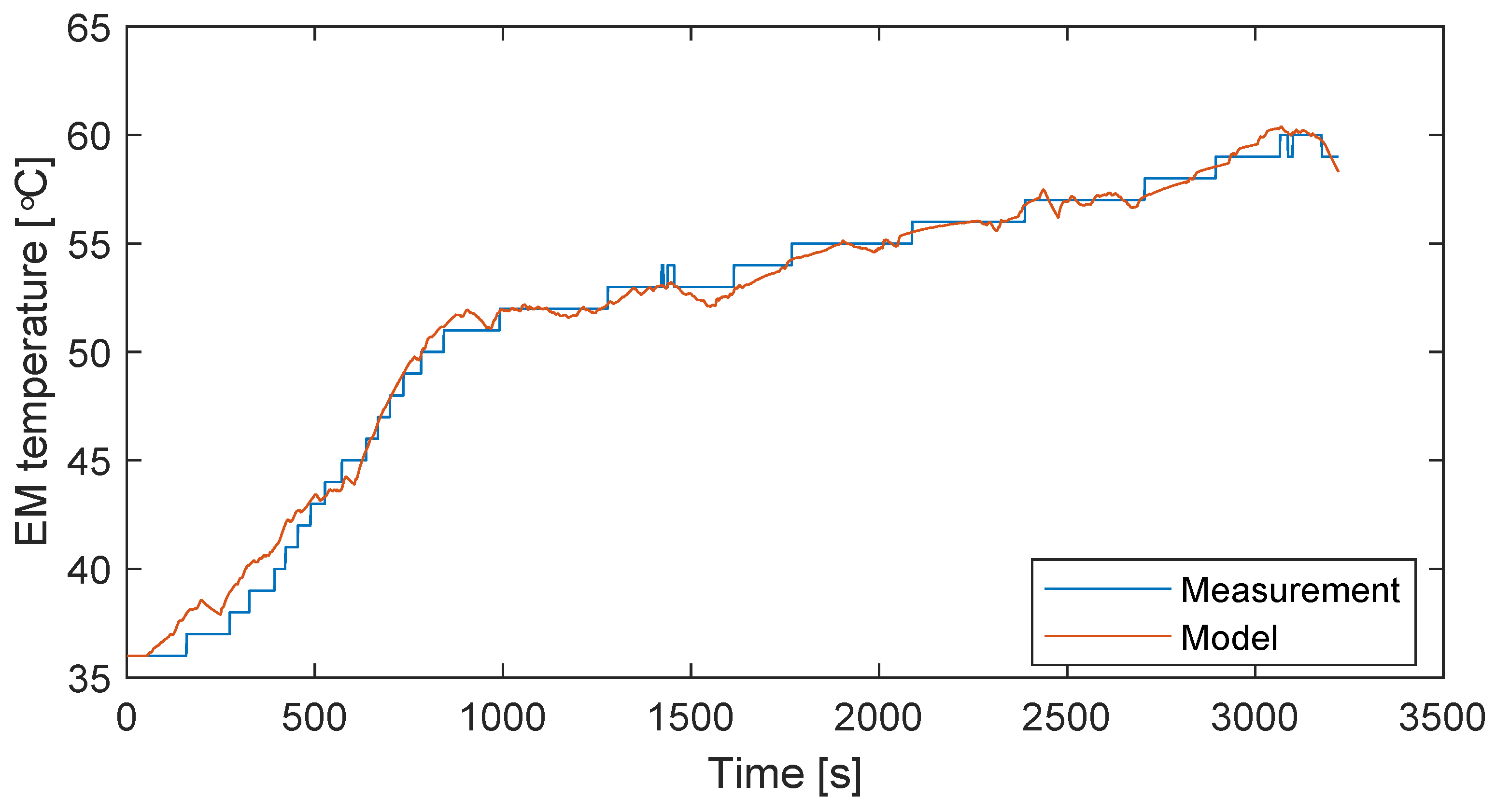
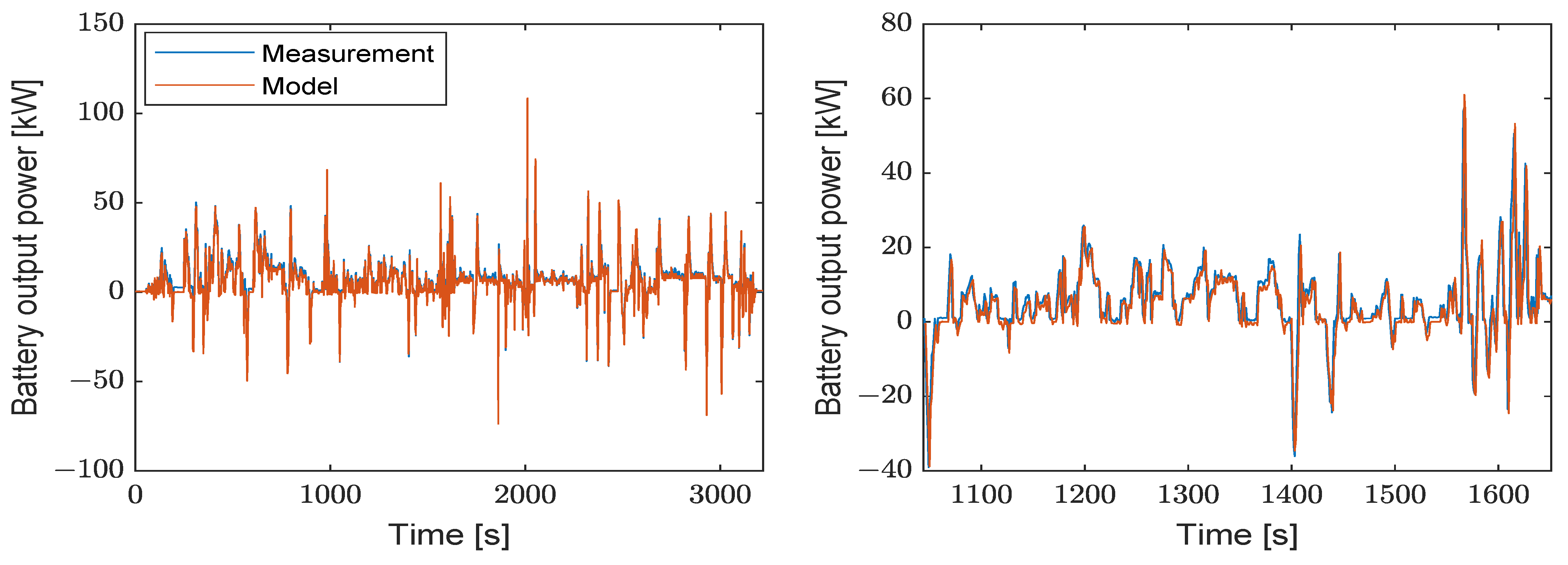
Appendix A.5. Battery
Appendix B. CVT-Based EV Model
Appendix C. Convex Programming
Appendix D. Main Parameters of EV Model
References
- Kwon, K.; Seo, M.; Min, S. Efficient Multi-Objective Optimization of Gear Ratios and Motor Torque Distribution for Electric Vehicles with Two-Motor and Two-Speed Powertrain System. Appl. Energy 2020, 259, 114190. [Google Scholar] [CrossRef]
- Karki, A.; Phuyal, S.; Tuladhar, D.; Basnet, S.; Shrestha, B.P. Status of Pure Electric Vehicle Power Train Technology and Future Prospects. Appl. Syst. Innov. 2020, 3, 35. [Google Scholar] [CrossRef]
- Han, J.; Shin, J.; Kim, J.; Oh, S. Design 2-Speed Transmission for Compact Electric Vehicle Using Dual Brake System. Appl. Sci. 2019, 9, 1793. [Google Scholar] [CrossRef]
- Hupkes, I. Variable Drive EV: Comfort Solution for Full Electric Vehicles. In Proceedings of the 3rd International VDI Conference: CVT in Automotive Applications, Baden-Baden, Germany, 19–20 March 2019. [Google Scholar]
- Anselma, P.G.; Belingardi, G. Comparing Battery Electric Vehicle Powertrains through Rapid Component Sizing. Int. J. Electr. Hybrid Veh. 2019, 11, 36–58. [Google Scholar] [CrossRef]
- Van der Sluis, F.; Römers, L.; van Spijk, G.; Hupkes, I. CVT, Promising Solutions for Electrification; SAE Technical Paper 2019-01-0359; SAE International: Warrendale, PA, USA, 2019. [Google Scholar]
- Wei, C.; Hofman, T.; Ilhan Caarls, E.; van Iperen, R. A Review of the Integrated Design and Control of Electrified Vehicles. Energies 2020, 13, 5454. [Google Scholar] [CrossRef]
- Silvas, E.; Hofman, T.; Murgovski, N.; Etman, L.F.P.; Steinbuch, M. Review of Optimization Strategies for System-Level Design in Hybrid Electric Vehicles. IEEE Trans. Veh. Technol. 2017, 66, 57–70. [Google Scholar] [CrossRef]
- Singh, K.V.; Bansal, H.O.; Singh, D. Feed-forward Modeling and Real-time Implementation of an Intelligent Fuzzy Logic-based Energy Management Strategy in a Series–parallel Hybrid Electric Vehicle to Improve Fuel Economy. Electr. Eng. 2020, 102, 967–987. [Google Scholar] [CrossRef]
- Lee, H.; Song, C.; Kim, N.; Cha, S.W. Comparative Analysis of Energy Management Strategies for HEV: Dynamic Programming and Reinforcement Learning. IEEE Access 2020, 8, 67112–67123. [Google Scholar] [CrossRef]
- Qi, Z.; Shi, Q.; Zhang, H. Tuning of Digital PID Controllers Using Particle Swarm Optimization Algorithm for a CAN-Based DC Motor Subject to Stochastic Delays. IEEE Trans. Ind. Electron. 2020, 67, 5637–5646. [Google Scholar] [CrossRef]
- Zhang, Y.; Wang, S.; Ji, G. A Comprehensive Survey on Particle Swarm Optimization Algorithm and Its Applications. Math. Probl. Eng. 2015, 2015, 931256. [Google Scholar] [CrossRef]
- Pourabdollah, M.; Silvas, E.; Murgovski, N.; Steinbuch, M.; Egardt, B. Optimal Sizing of a Series PHEV: Comparison between Convex Optimization and Particle Swarm Optimization. IFAC-PapersOnLine 2015, 48, 16–22. [Google Scholar] [CrossRef]
- East, S.; Cannon, M. Energy Management in Plug-In Hybrid Electric Vehicles: Convex Optimization Algorithms for Model Predictive Control. IEEE Trans. Control Syst. Technol. 2020, 28, 2191–2203. [Google Scholar] [CrossRef]
- Pourabdollah, M.; Murgovski, N.; Grauers, A.; Egardt, B. Optimal Sizing of a Parallel Phev Powertrain. IEEE Trans. Veh. Technol. 2013, 62, 2469–2480. [Google Scholar] [CrossRef]
- Wei, C.; Hofman, T.; Ilhan Caarls, E.; van Iperen, R. Evolution and Classification of Energy and Thermal Management Systems in Electrified Powertrains. In Proceedings of the 2019 IEEE Vehicle Power and Propulsion Conference, Hanoi, Vietnam, 14–17 October 2019. [Google Scholar]
- Luin, B.; Petelin, S.; Al-Mansour, F. Microsimulation of Electric Vehicle Energy Consumption. Energy 2019, 174, 24–32. [Google Scholar] [CrossRef]
- Wei, C.; Hofman, T.; Ilhan Caarls, E.; van Iperen, R. Integrated Energy and Thermal Management for Electrified Powertrains. Energies 2019, 12, 2058. [Google Scholar] [CrossRef]
- Markel, T.; Brooker, A.; Hendricks, T.; Johnson, V.; Kelly, K.; Kramer, B.; O’Keefe, M.; Sprik, S.; Wipke, K. ADVISOR: A Systems Analysis Tool for Advanced Vehicle Modeling. J. Power Sources 2002, 110, 255–266. [Google Scholar] [CrossRef]
- Ruan, J.; Walker, P.; Zhang, N. A Comparative Study Energy Consumption and Costs of Battery Electric Vehicle Transmissions. Appl. Energy 2016, 165, 119–134. [Google Scholar] [CrossRef]
- Murgovski, N.; Johannesson, L.; Sjöberg, J. Convex Modeling of Energy Buffers in Power Control Applications. IFAC Proc. Vol. 2012, 45, 92–99. [Google Scholar] [CrossRef]
- Boyd, S.; Vandenberghe, L. Convex Optimization; Cambridge University Press: Cambridge, UK, 2009. [Google Scholar]
- van Berkel, K. Control of a Mechanical Hybrid Powertrain. Ph.D. Thesis, Eindhoven University of Technology, Eindhoven, The Netherlands, 2013. [Google Scholar]
- van der Sluis, F. The Pushbelt designed for Change. In Proceedings of the 3rd International VDI Conference: CVT in Automotive Applications, Baden-Baden, Germany, 19–20 March 2019. [Google Scholar]
- van der Sluis, F.; Yildiz, S.; Brandsma, A.; Veltmans, P.; Kunze, M. The CVT Pushbelt reinvented for Future Compact and Efficient Powertrains. In Proceedings of the 2017 JSAE Annual Congress, Yokohama, Japan, 24–26 May 2017. [Google Scholar]
- Pourabdollah, M. Optimization of Plug-in Hybrid Electric Vehicles. Ph.D. Thesis, Chalmers University of Technology, Gothenburg, Sweden, 2015. [Google Scholar]
- Electrical and Electronics Technical Team Roadmap. Technical Report; U.S. DRIVE: Washington, DC, USA, 2017.
- Lutsey, N.; Nicholas, M. Update on Electric Vehicle Costs in the United States through 2030; Technical Report; International Council on Clean Transportation: Washington, DC, USA, 2019. [Google Scholar]
- Mahmoudzadeh Andwari, A.; Pesiridis, A.; Rajoo, S.; Martinez-Botas, R.; Esfahanian, V. A Review of Battery Electric Vehicle Technology and Readiness Levels. Renew. Sustain. Energy Rev. 2017, 78, 414–430. [Google Scholar] [CrossRef]
- Software for Disciplined Convex Programming. Available online: http://cvxr.com/ (accessed on 11 February 2021).
- Tang, T.; Devlin, M.; Mathur, N.; Henly, T.; Saathoff, L. Lubricants for (Hybrid) Electric Transmissions. SAE Int. J. Fuels Lubr. 2013, 6, 289–294. [Google Scholar] [CrossRef]
- McFadden, C.; Hughes, K.; Raser, L.; Newcomb, T. Electrical Conductivity of New and Used Automatic Transmission Fluids. SAE Int. J. Fuels Lubr. 2016, 9, 519–526. [Google Scholar] [CrossRef]
- Bennion, K.; Moreno, G. Convective Heat Transfer Coefficients of Automatic Transmission Fluid Jets with Implications for Electric Machine Thermal Management. In Proceedings of the ASME 2015 International Technical Conference and Exhibition on Packaging and Integration of Electronic and Photonic Microsystems InterPACK2015, San Francisco, CA, USA, 6–9 July 2015. [Google Scholar]
- Salah, M. Nonlinear Control Strategies for Advanced Vehicle Thermal Management Systems. Ph.D. Thesis, Clemson University, Clemson, SC, USA, 2007. [Google Scholar]

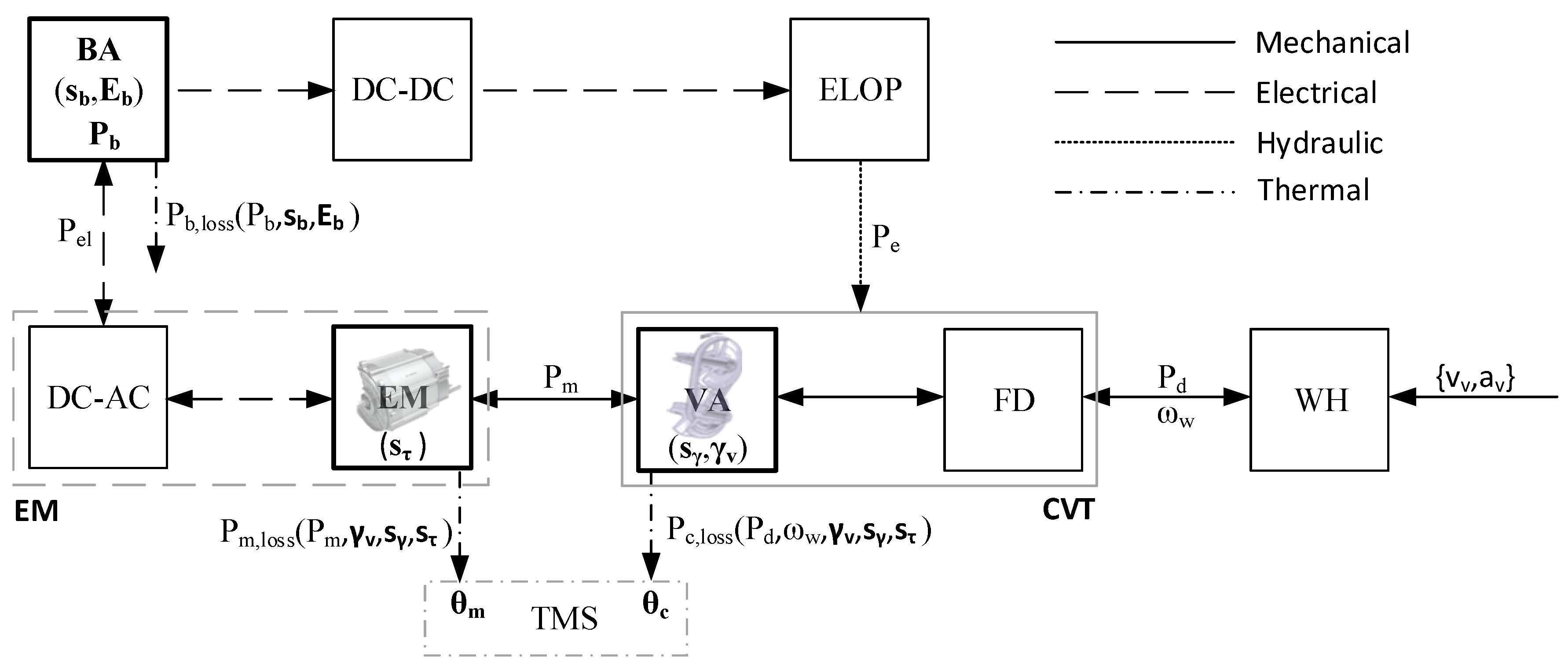

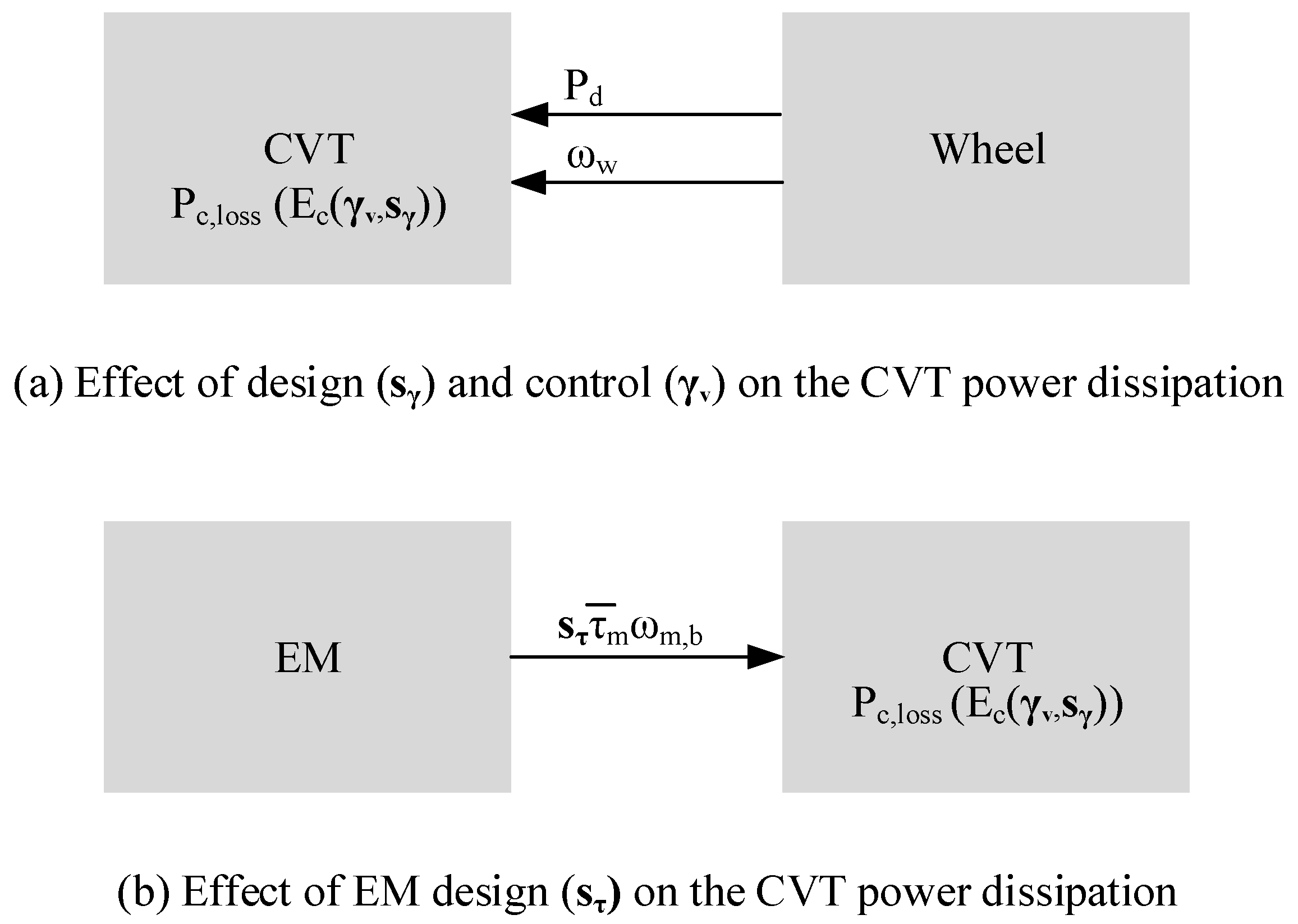
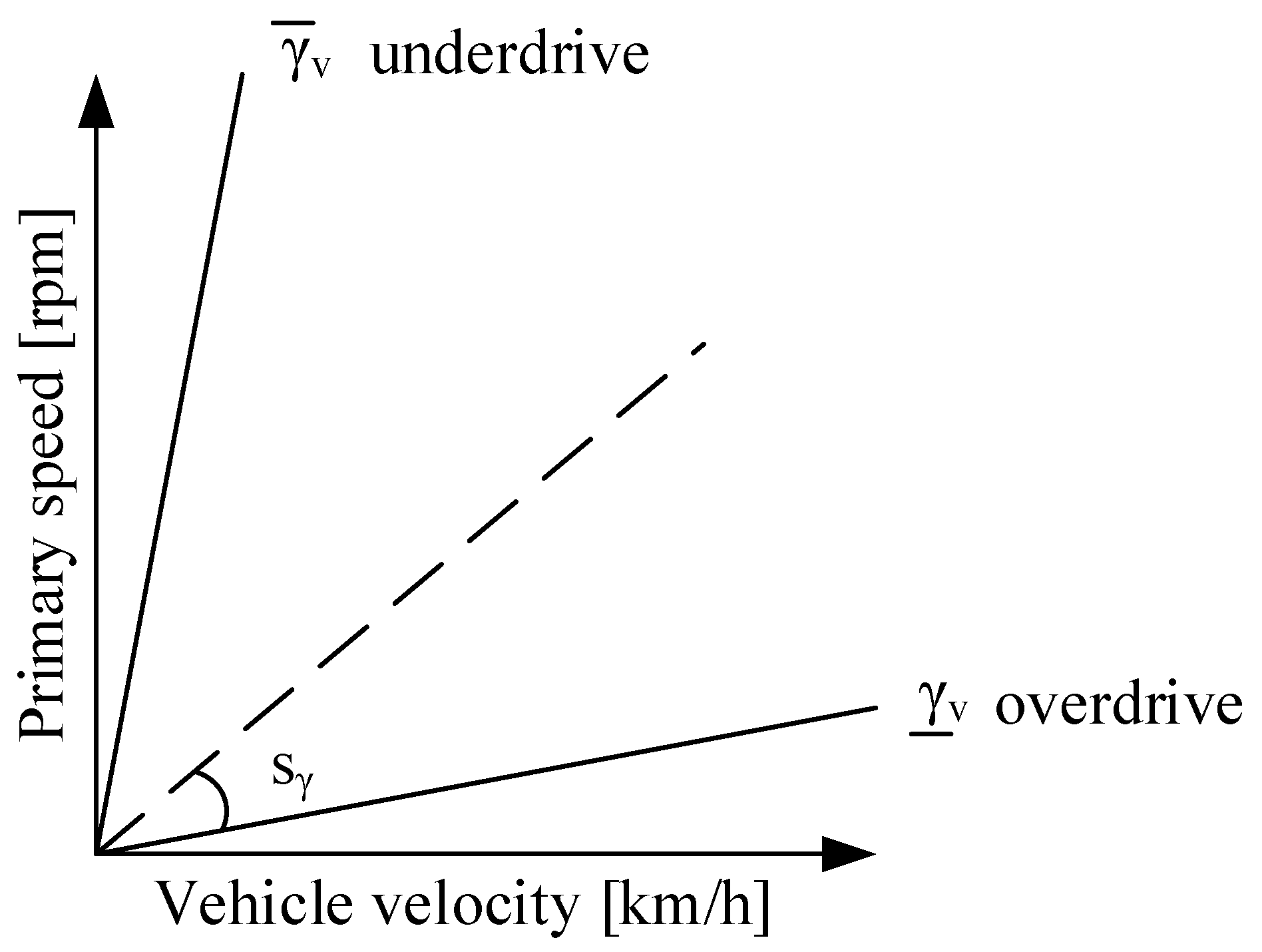
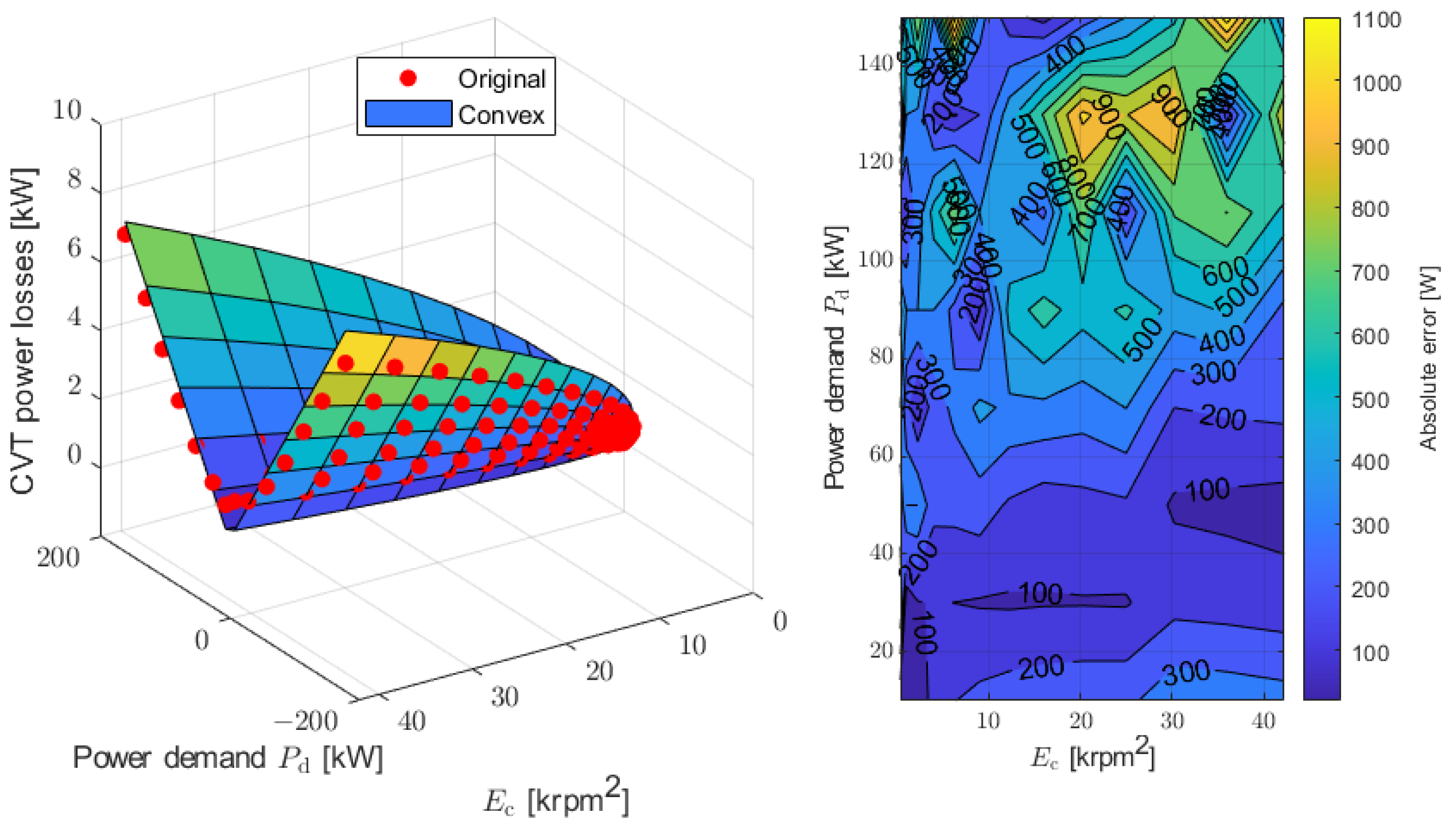


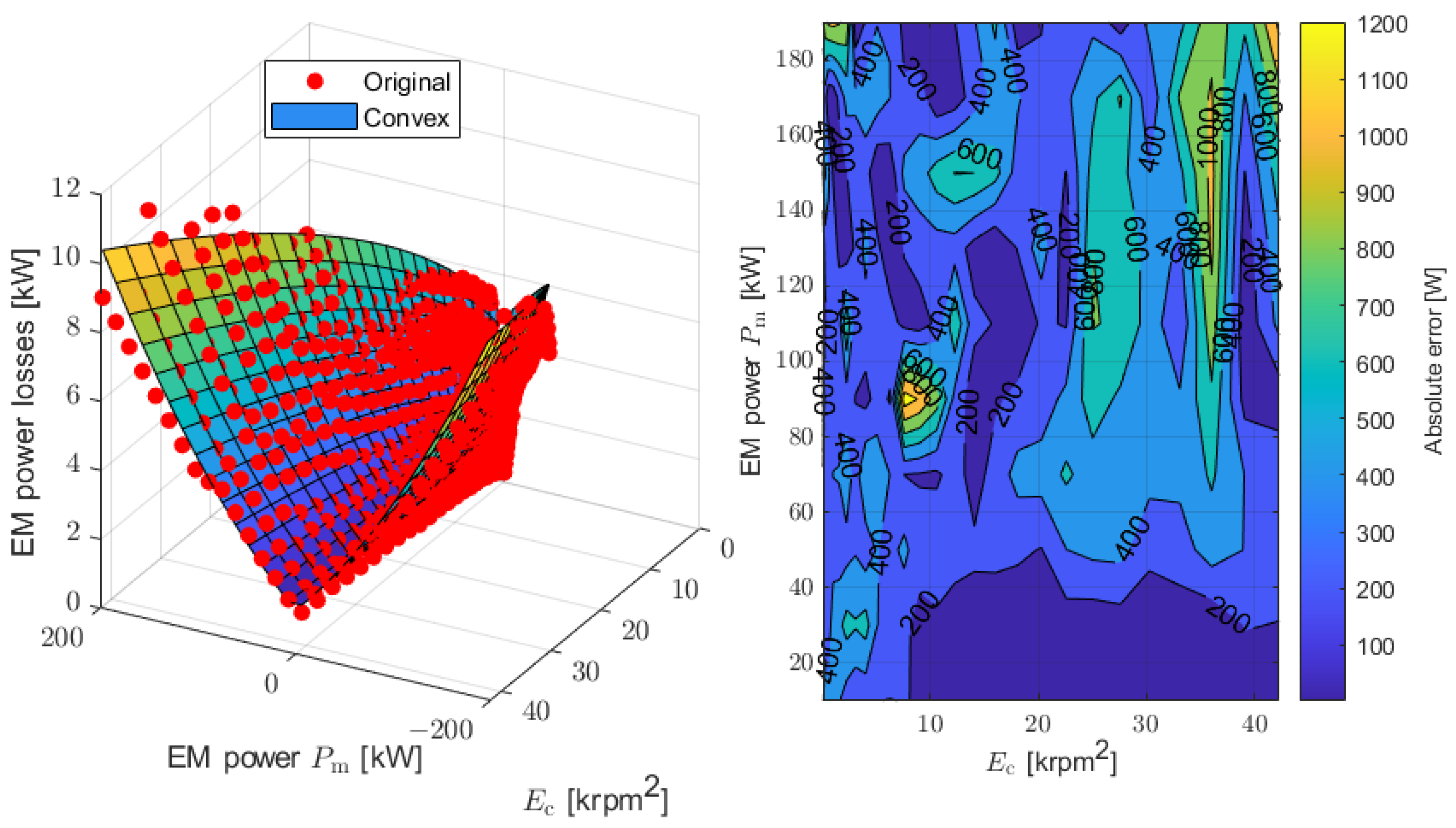


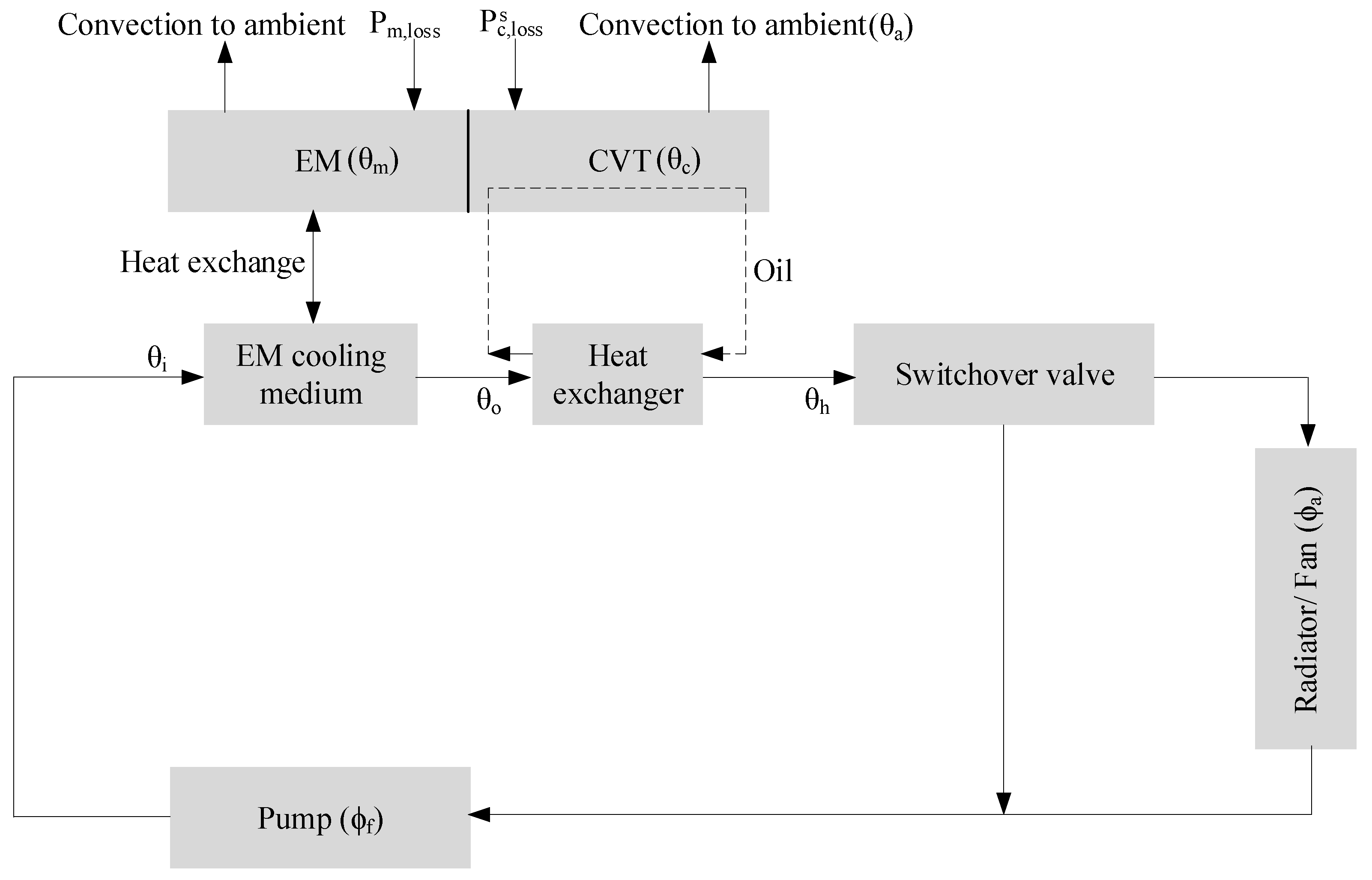
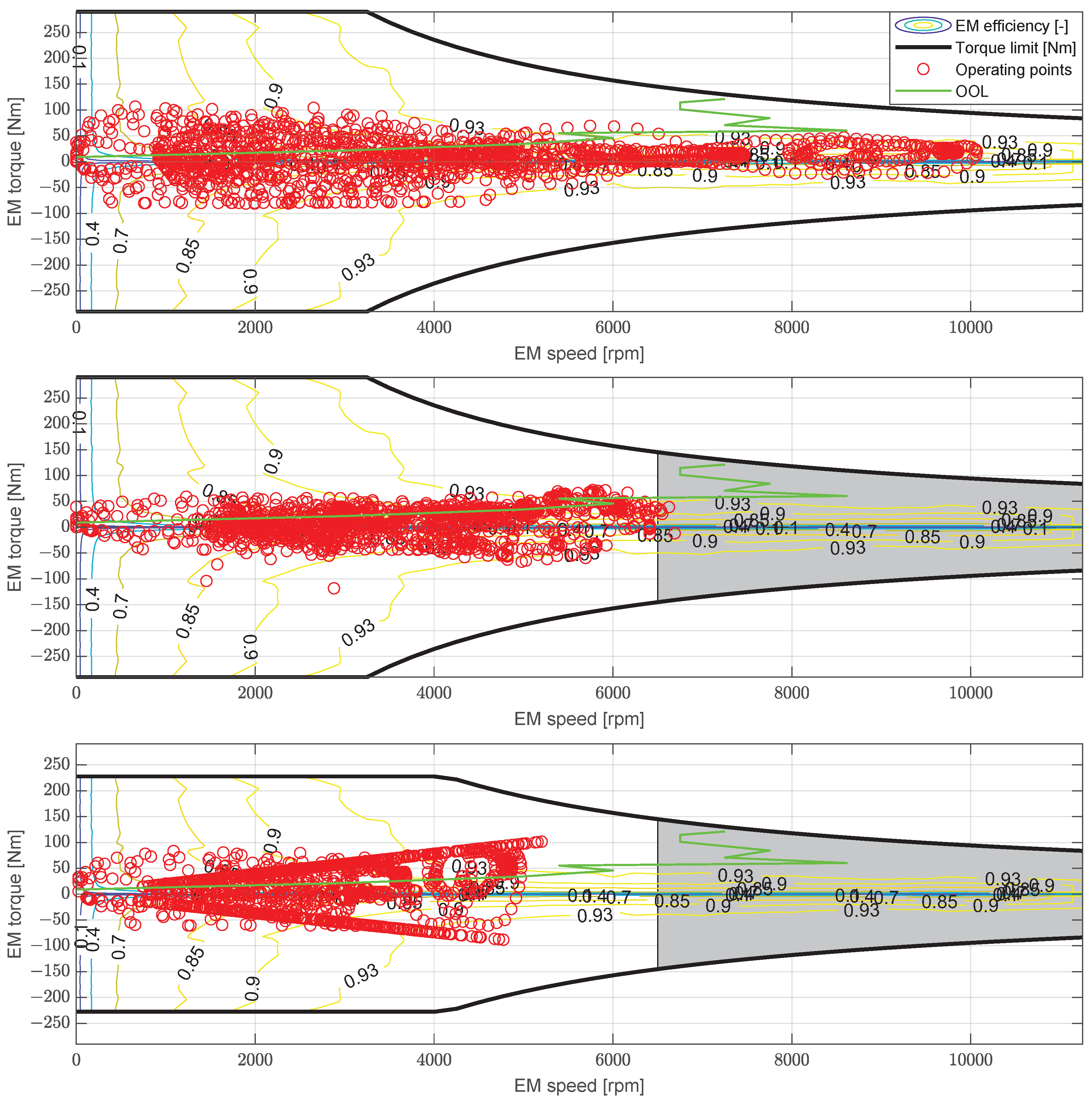
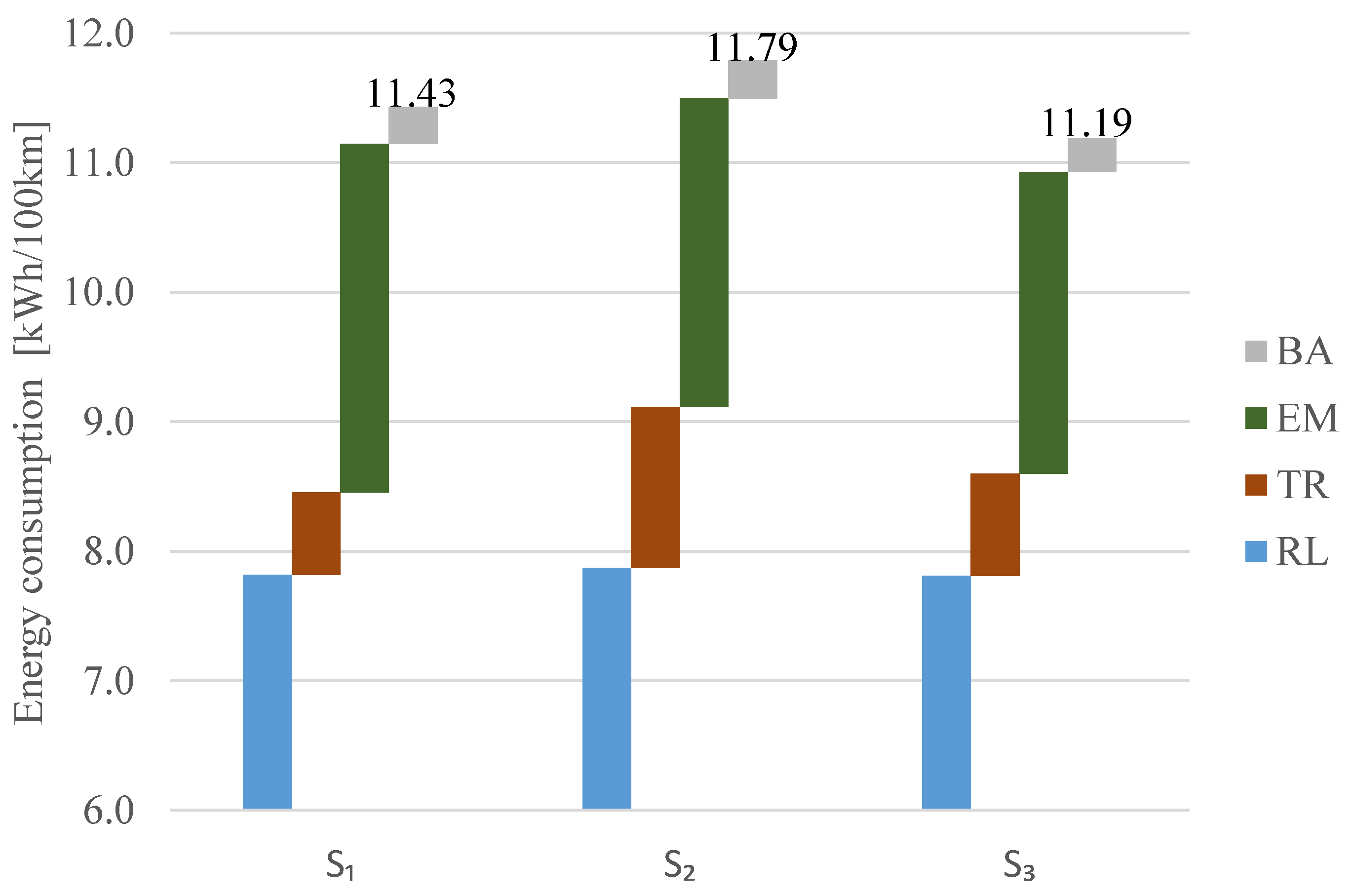
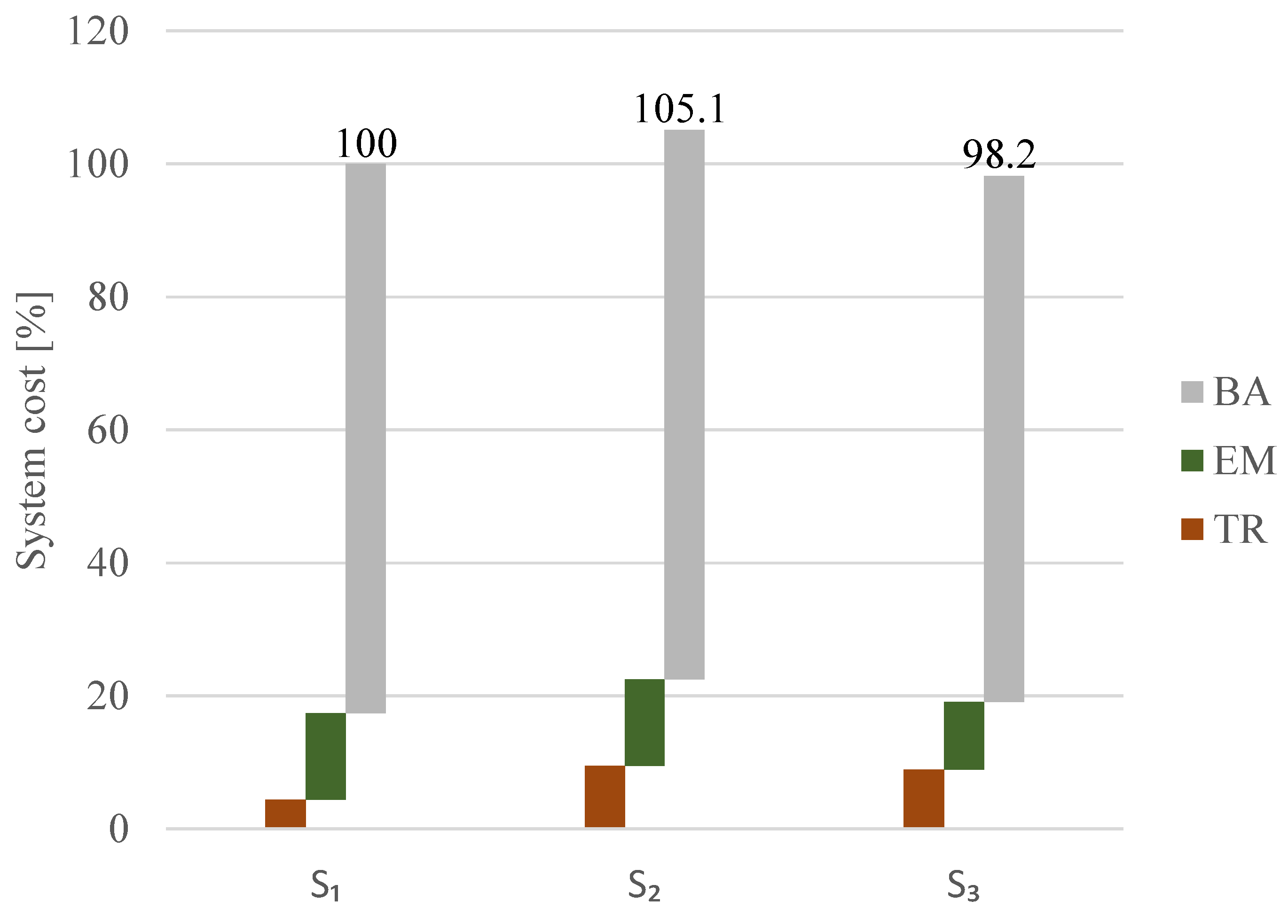
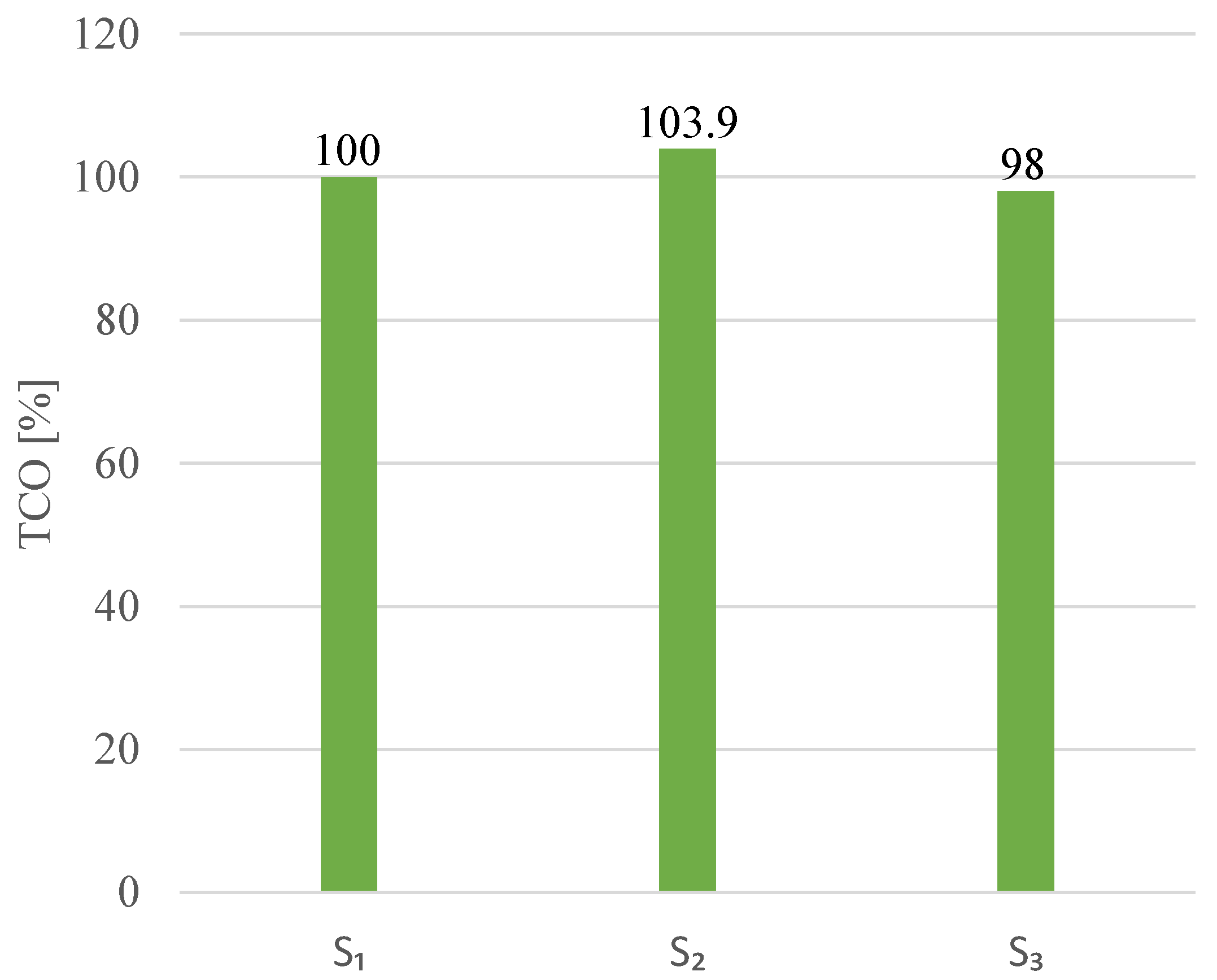
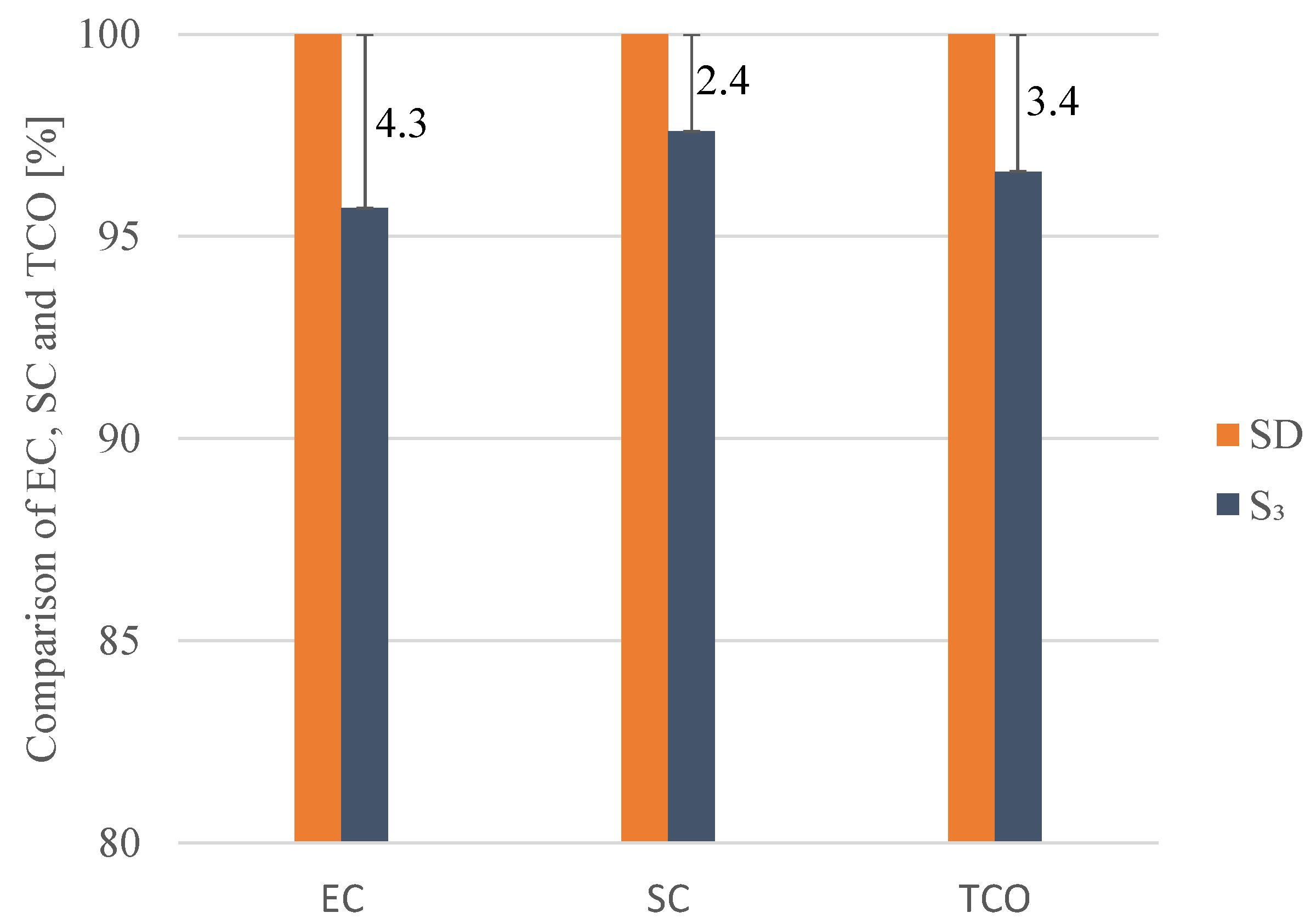
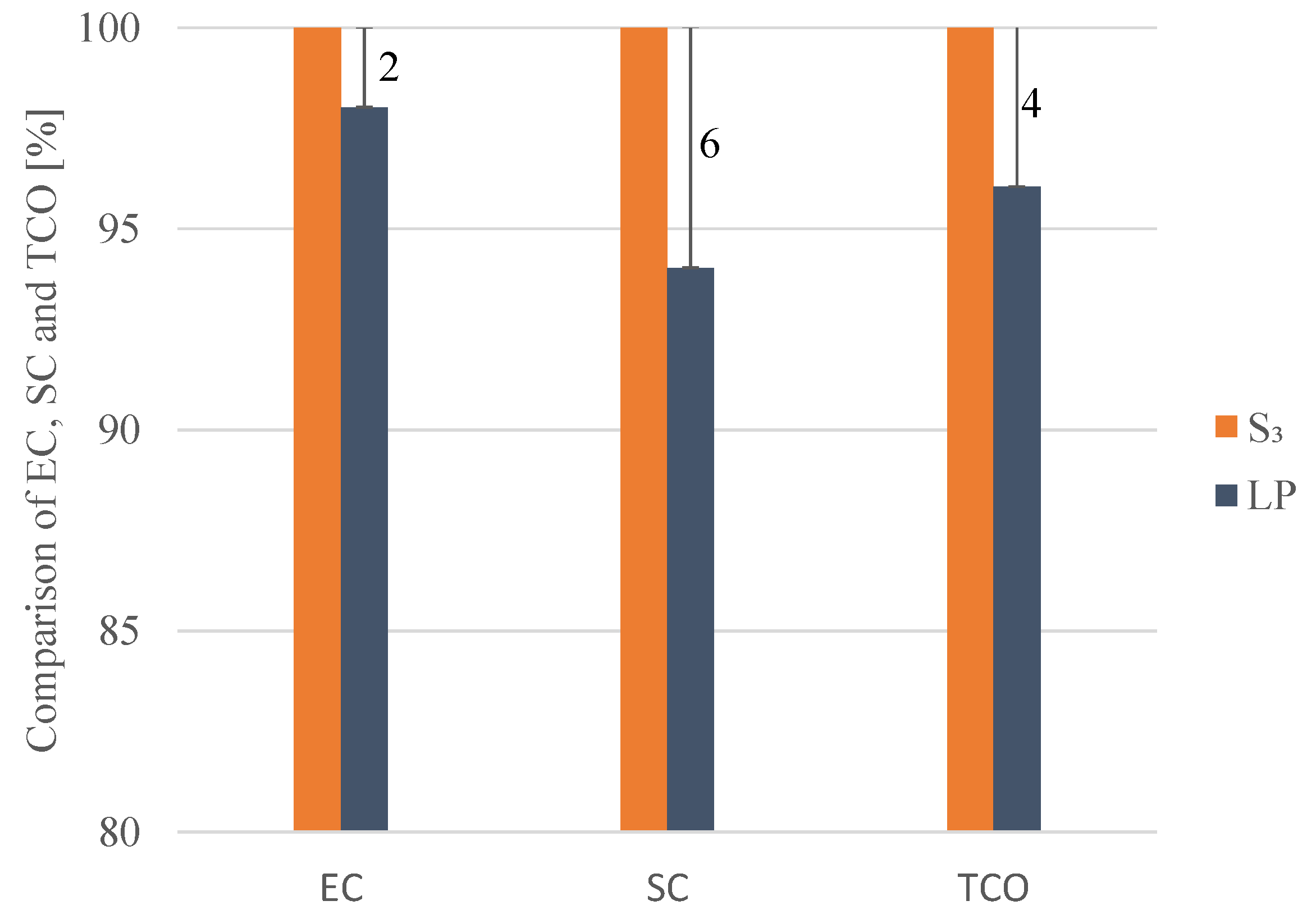
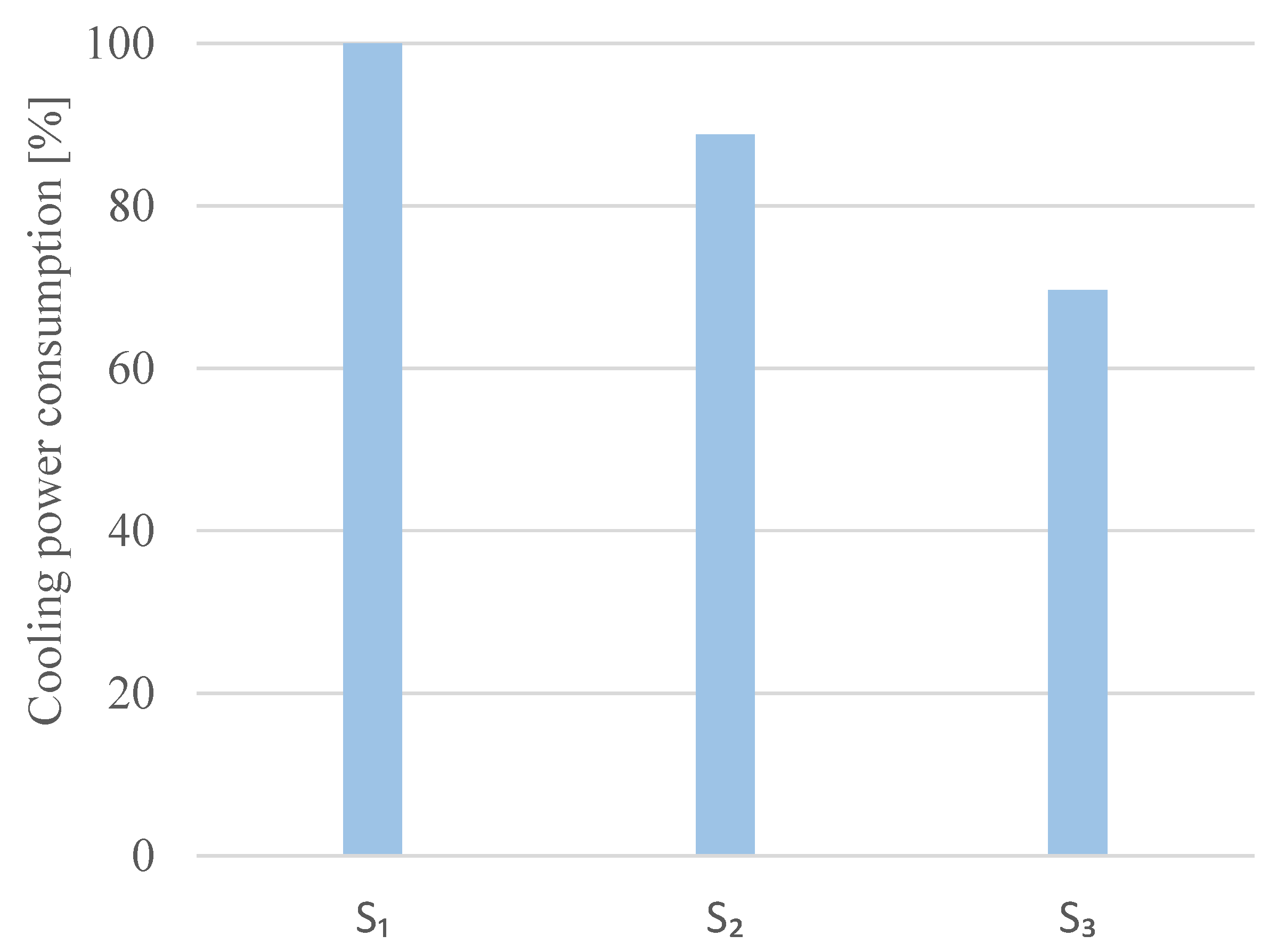
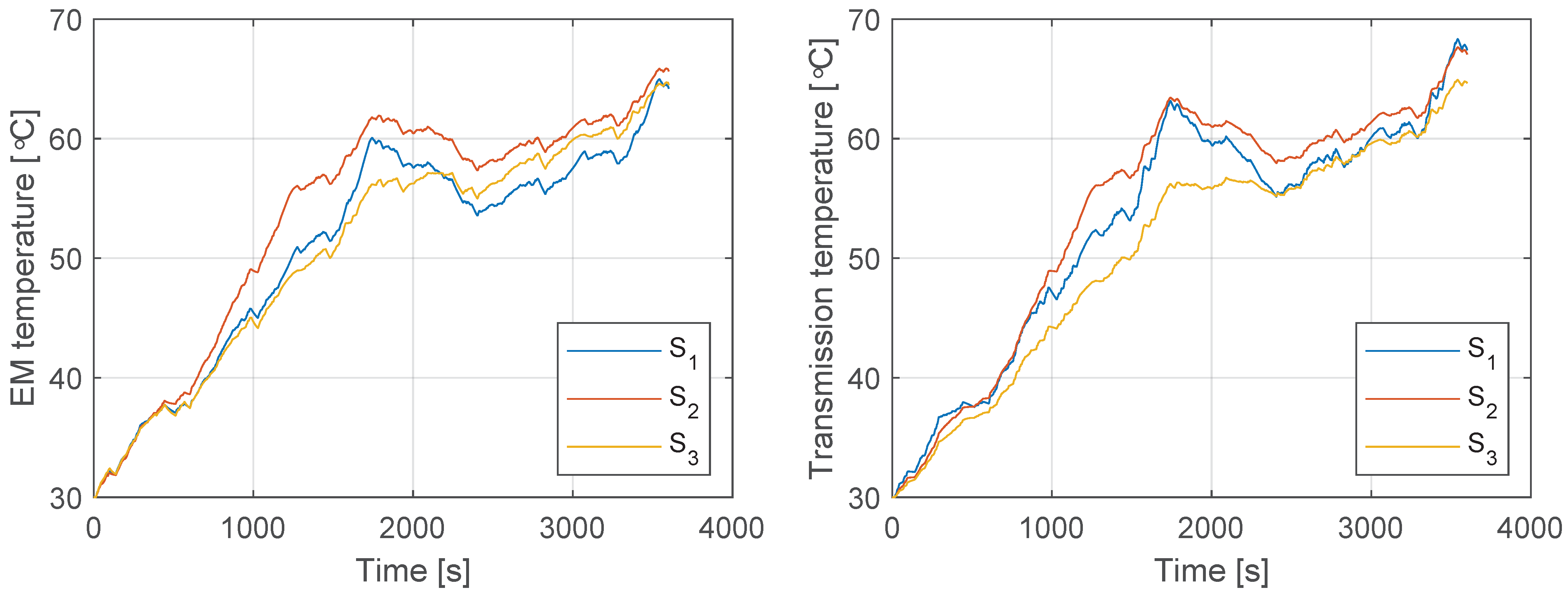
| Parameter | Unit | |||
|---|---|---|---|---|
| Transmission ratio | - | 9.02 | [4.47, 16.8] | [3.5, 11.68] |
| EM scaling factor | - | 1 | 1 | 0.79 |
| Battery cells | - | 264 | 264 | 253 |
| Maximum EM torque | Nm | 290 () | 290 | 228 |
| EM base speed | rpm | 3293 () | 3293 | 4188 |
| Maximum EM power | kW | 100 () | 100 | 100 |
| Curb weight | kg | 1252 () | 1252 | 1252 |
| Transmission mass | kg | 26 () | 56 () | 52 |
| EM mass | kg | 74 () | 74 | 58 |
| Battery mass | kg | 318 () | 318 | 303 |
| Driver mass | kg | 90 () | 90 | 90 |
Publisher’s Note: MDPI stays neutral with regard to jurisdictional claims in published maps and institutional affiliations. |
© 2021 by the authors. Licensee MDPI, Basel, Switzerland. This article is an open access article distributed under the terms and conditions of the Creative Commons Attribution (CC BY) license (http://creativecommons.org/licenses/by/4.0/).
Share and Cite
Wei, C.; Hofman, T.; Ilhan Caarls, E. Co-Design of CVT-Based Electric Vehicles. Energies 2021, 14, 1825. https://doi.org/10.3390/en14071825
Wei C, Hofman T, Ilhan Caarls E. Co-Design of CVT-Based Electric Vehicles. Energies. 2021; 14(7):1825. https://doi.org/10.3390/en14071825
Chicago/Turabian StyleWei, Caiyang, Theo Hofman, and Esin Ilhan Caarls. 2021. "Co-Design of CVT-Based Electric Vehicles" Energies 14, no. 7: 1825. https://doi.org/10.3390/en14071825
APA StyleWei, C., Hofman, T., & Ilhan Caarls, E. (2021). Co-Design of CVT-Based Electric Vehicles. Energies, 14(7), 1825. https://doi.org/10.3390/en14071825







